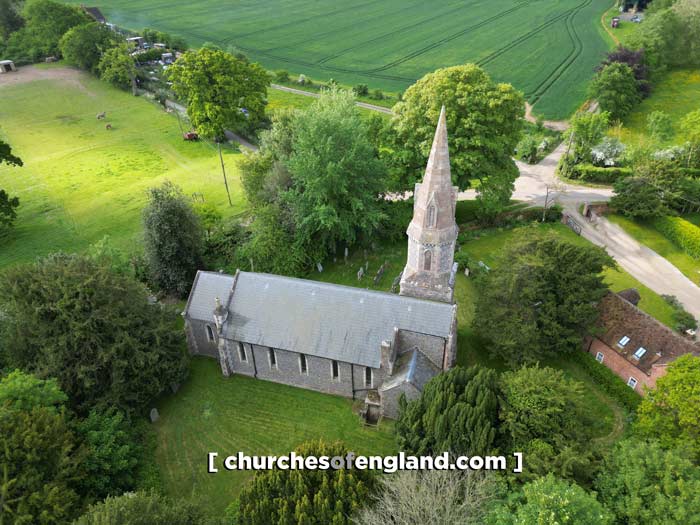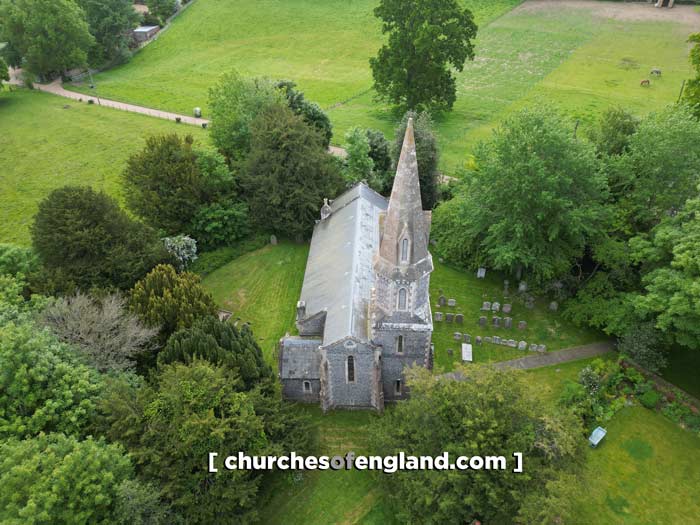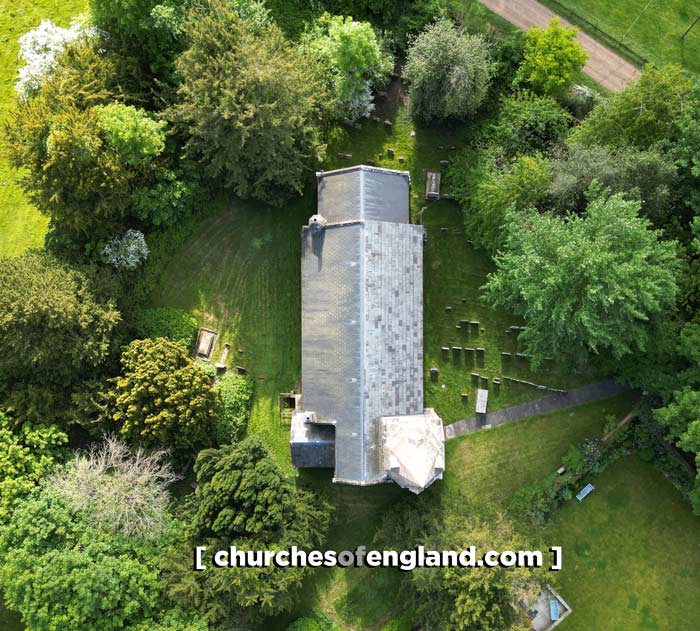St. Mary’s Church in Lower Hardres
Nether or Little Hardres were the previous names for Lower Hardres. At the time of the Doomsday Book, Odo, Bishop of Baieux, owned the Manor of Nether, also known as Lower Hardres.
His land was described in the Domesday Book as having a church, eight servants, and thirteen acres of meadow.
The first register entries mentioning St. Mary’s, Lower Hardres, come from 1563.
The original St. Mary’s Church had become dilapidated when James Tilliard, a parishioner, bequeathed the community £2,000 in his will to allow for its demolition and replacement with a new church.
The ancient font was preserved when the current St. Mary’s Church was constructed in 1830.
The font is built of Bethersden marble and dates back to 1217. It is one of only two of its kind in Kent.
The church is cherished in Lower Hardres village. Fields to the north and bluebell forests to the east round this lovely piece of land.
St. Mary’s Church in Lowers Hardres is fortunate to have a large churchyard that is used by a large number of people each year and is frequently maintained by their group of dedicated gardeners. This provides the ideal setting for introspection in peace.
The Friends Group’s mission is to collaborate, socialise, and fundraise in order to keep this historic structure commanding our village’s centre for many years to come.
For the spire and internal plasterwork repairs that were required in 2003, the organisation contributed more than £50,000.
The most spectacular stained glass windows, which had been covered by boards since around 1940, were discovered when the east windows were opened in 2005, and they completely changed the appearance of our church.
They were overjoyed when the church bell, which had been out of commission for a while, was reactivated in time for the Armistice Day centenary observances.
This allowed them to stand in solidarity with churches and cathedrals in towns, cities and villages all around the nation in honour of those who lost their lives in the First World War and in support of the Armistice 2018 centenary commemoration.
Historians gained more knowledge about the past of St. Mary’s Church, a Grade II listed structure that was reconstructed in the early English style in 1832 and was created by the architects Rickman and Hutchinson.
James Tillard, esq., who is interred in the chapel beside his wife Mary, left money towards the construction of the new church in his will.
A previous building from the 12th century was replaced by the current church. For £4, the Canterbury church of St. Mary de Castro sold three bells to the Lower Hardres church in 1543, but by 1743 there was just one bell left. Richard Phelps, the master of the Whitechapel Bell Foundry in London at the time, had recast this single bell in 1723.
The former St. Mary’s Church was described as “small and dark, consisting of two isles and two chancels, having a low pointed steeple at the west end, in which hangs only one bell” by Edward Hasted in 1800. (Edward Hasted, The History and Topographical Survey of the County of Kent, Vol. 9).
Thomas Mears II, who is also the master founder at the Whitechapel foundry, recast the bell once more as part of the reconstruction of St. Mary’s in 1832.
The bell bears “T Mears of London Fecit 1832” engraved on it and is around 5cwt in weight and 26 inches in diameter.
Thanks to http://www.bridgechurchgroup.co.uk/lower-hardres-church.php for this information.
Photos of St. Mary’s Church in Lower Hardres



Thank you to Drones Deep for these fabulous photos.